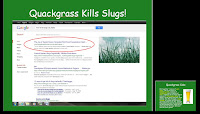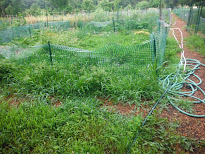For twelve excruciating hours on Sunday, I believed I had
contributed to the horrifying demise of an innocent creature with which my wife
and I had only recently been entrusted. Because this is a Christmas-time story,
I will say, up front, that this tale has a happy ending.
 |
Betty and Brandy
circa 1980 |
My wife, Betty, is a cat person.
When I first met her in 1974, she was the
guardian of Brandy, who had been born in her college apartment closet.
In order to date Betty, I had to have
Brandy’s approval.
To marry Betty, I had
to adopt her cat. Brandy lived a long life, following us from upstate New York,
to Chicago, to Brooklyn, and to Massachusetts; never complaining about our
seeming impermanence.
 |
| Alfie, circa 1993 |
Brandy succumbed to cancer at the age of 18 and, after a
suitable period of mourning – and now living in Stamford, Connecticut – we
adopted a seven-year-old shelter cat whom we named Alfred Lord Tennisanyone,
for his ability to expertly bat small objects.
Alfie obligingly followed us to Virginia and back to Massachusetts. His
specialty was finding odd places to hide.
When we moved into a temporary apartment in Alexandria, he promptly went
walkabout and took an elevator to the lobby.
He charmed everyone he met, and his affection could be purchased by the
highest bidder, preferably in the form of food. He developed pancreatitis at
16.
 |
| T.R., circa 2002 |
After another period of mourning, we adopted another shelter
cat, this one from New Hampshire.
Though
he was almost certainly a Red Sox fan, T.R. (Tabby la Rasa) was a
one-of-a-kind homebody who cheerfully followed Betty around the house, laid at
her feet, and slept at the foot of our bed, snoring like a sailor.
He lived to the ripe old age of 21 and even
adorns the cover of one of my books.
 |
| That's T.R.! |
After T.R.’s death, we elected to be a pet-free household for
a period of time. Our travel schedules for both business and pleasure were
hectic, and we reasoned a cat should not know his or her sitter better than Mom
and Dad. After three years, though, I sensed we were both ready for another
furry face in our family.
We would adopt
a cat for Christmas.
That was when I discovered the rules had changed. The Medfield Animal Shelter, which once had
daily visiting hours for animals and humans to assess one another, now required
an online application process including references. Fortunately, one of our long-time members of
the Community Garden is a foster parent for ‘hard-to-place’ animals, and could
speak well of our prior stewardship.
Moreover, the supply-demand equation for adoptions had
changed. In Massachusetts, even feral
animals are routinely spayed and neutered, then re-released into the wild. As a result, there are few local animals
available. Instead, adoptable cats and
dogs come from other regions.
 |
| Abigail Adams |
Last Wednesday, our application having been vetted, we were
invited to meet three cats.
All were
from Florida; two had required just-completed major surgery.
We had our heart set on a domestic shorthair
and there was an eight-month-old female tuxedo who peered at us with that
‘please take me home with you’ kind of look that melted your heart.
‘Zoe’ has been born in April and surrendered
to a shelter in Sunny Isles Beach, Florida.
She had lived with a foster family for a few months but, as we were
told, there is no demand for shelter cats in south Florida but there is a
continuing supply because pets are not routinely neutered. Thus, Zoe and her
companions were put on a plane and flown to New England.
After a half-hour introduction, we said, ‘we’ll take
her’. She came home that same afternoon.
I suggested naming her Abigail Adams; both to honor an
illustrious Founding Mother and because one of my favorite characters in my
books, Liz Phillips, has a cat named Abigail.
As everyone who reads the series already thinks Liz is Betty’s crime-solving alter ego,
I figured we might as well bow to public pressure. Betty agreed. We had our 'Cat Who
Came for Christmas', albeit a few weeks early.
Abigail came to our house as a frightened and disoriented
animal. A week earlier, she had been in
a Miami-area apartment with a foster family and, likely, other cats (though the
notes from the foster parents stated clearly this cat would be happiest as a
lone animal in an all-adult household).
Then, she was on a plane, and likely not in Business Class. Next, she was in a shelter in a (large)
cage. Abigail was understandably
skittish, quick to bite or scratch, and constantly on the lookout for hiding
places. On her first full day with us,
we spent two hours ferreting her out of closets; once memorably burying herself
in a box of ribbons.
By Saturday, though, she seemed to have acclimated herself to
her new surroundings. She lay under a
table while we watch a movie; she even made a foray into our bedroom after we
retired, before determining that was 'too much too soon' on the familiarity scale.
Sunday morning, she was not in her sleeping tent (an Amazon
box with cut-outs for seeing the surrounding terrain). Abigail was found hiding in a closet and,
once discovered, took off like a shot. I had promised to fetch breakfast from a
favorite bakery in Wellesley. Betty went
out to the end of the driveway to bring in the newspapers. When I called to say I was on my way home,
Betty told me she had not seen Abigail since that lone encounter at 6:40 a.m.
 |
| The sink unit |
We searched what we had come to think of as her ‘usual hiding
places’ without success. We began to wonder if Abigail had somehow slipped out
of the house when I went to the bakery and Betty gathered the newspapers. After
breakfast, we did a more thorough search.
No cat.
We walked around outside
– we had a Nor’easter on Saturday and there was a crust of snow on the ground
and temperatures in the low 30’s.
No
cat.
We then did a room-by-room search, taking apart cushions and
tipping up every piece of furniture. We
truly scoured the house. No cat. I theorized Abigail might be hiding in the
garage (what self-respecting, Miami-born cat would venture out into the snow?). Betty checked
the basement, even though we were both certain the basement door was closed. No
cat.
 |
| Cat's-eye view of the sink |
As the afternoon wore on and the temperature began to fall, we
made two more extensive circuits of our property, looking for where a cat might
shelter. At twilight and exhausted, we took a nap.
Half an hour into the nap, I was awakened by
what I was convinced was mewing and, running into our living room, was
convinced I saw Abigail huddled outside at the door to our screened porch.
Fifteen minutes of frantic searching yielded
no confirmation. I must have been dreaming.
We looked at one another and, for the first time, began to
accept the terrifying reality that Abigail was lost. She had insufficient fur or body fat to
survive a New England night, and would be easy prey for the multiple carnivores
that live in the conservation land behind our home. Our only hope was someone
found her on the street, took her in, and would phone the animal shelter in the
morning.
Feeling horrible and guilty for our neglect, neither of us
felt like having dinner. We read the
newspapers and then books. Around 8
p.m., sitting in our living room, we heard a noise; a ‘thump’ sound. We looked at one another, and investigated
every place we had previously looked. Still no cat. Maybe it was snow coming
off the roof.
 |
| A 5"-deep cave |
We returned to the sofa. Ten minutes later, another
thump.
This was definitely from inside
the house, and likely from our small upstairs which consists of two modest
bedroom/offices and a small bathroom.
We re-inspected every space.
Then, on a hunch,
Betty opened a small tightly-closed and never-used drawer under a sink. There, inside, was a
trapped cat.
It had somehow launched
itself into the drawer from underneath the sink through a hole a few inches on
a side.
Last night, Abigail was officially invited to sleep on a
blanket at the foot of our bed. She
declined, of course. For all we know, she was highly annoyed it took us so long
to suss out her hiding place. Over time,
perhaps, she will come to understand humans neither possess supersensitive
noses nor are mind readers. But I’m not
counting on a thank-you.















































